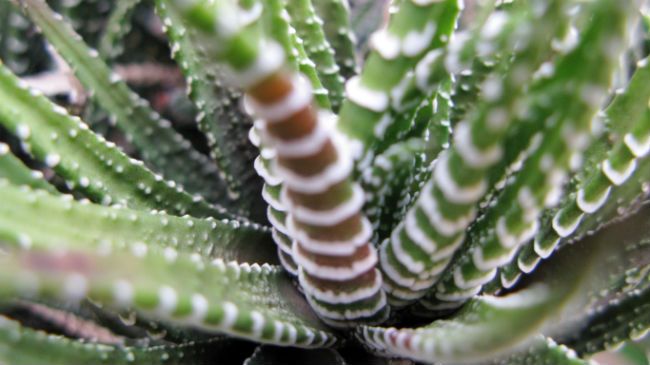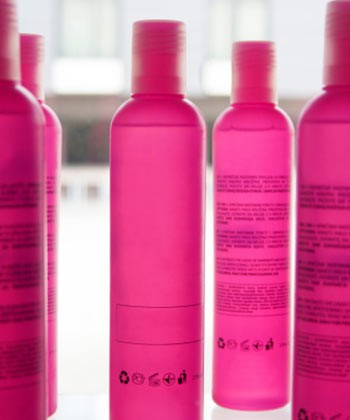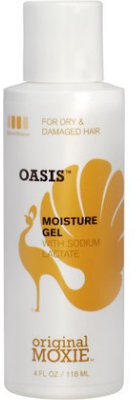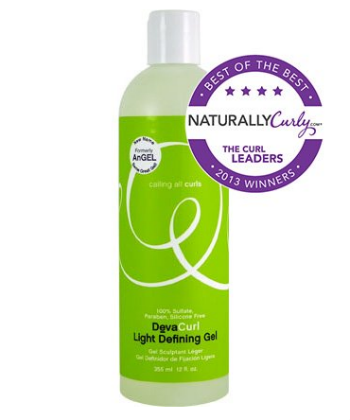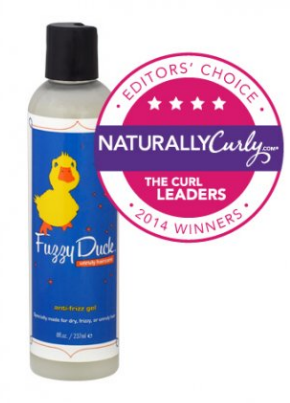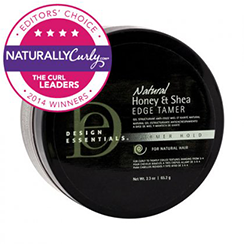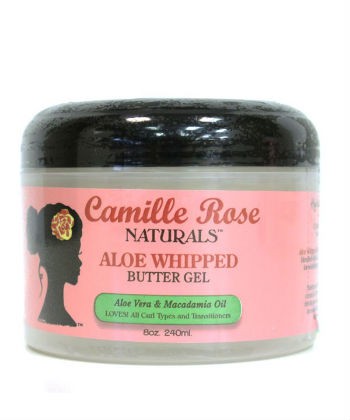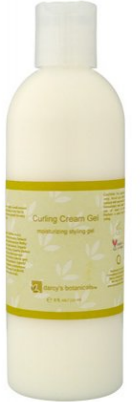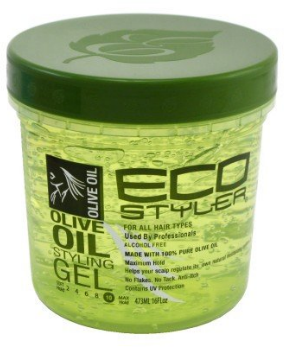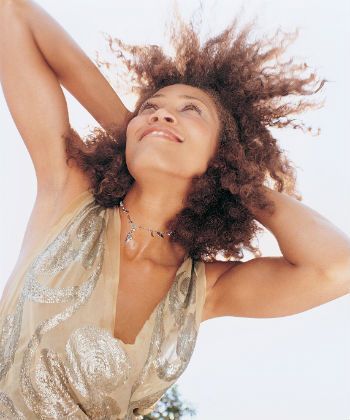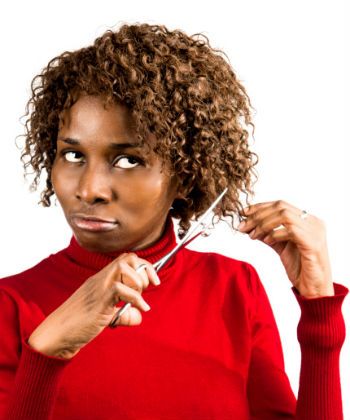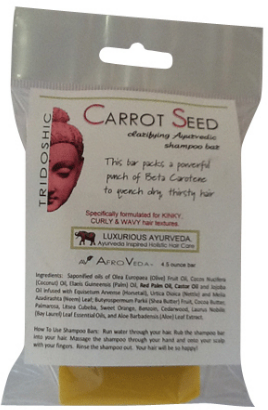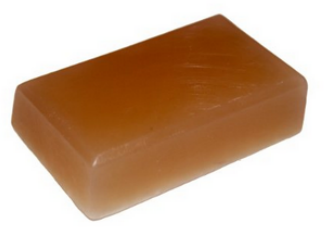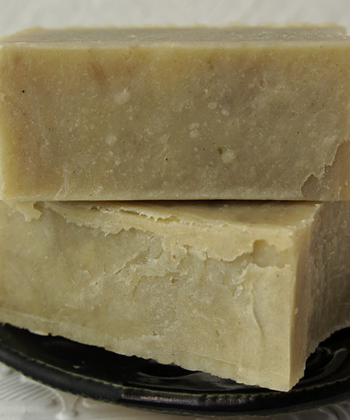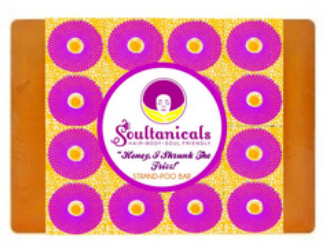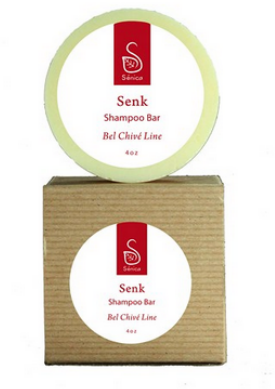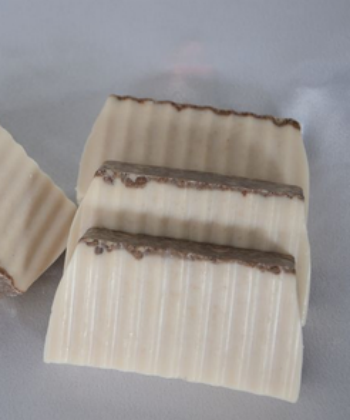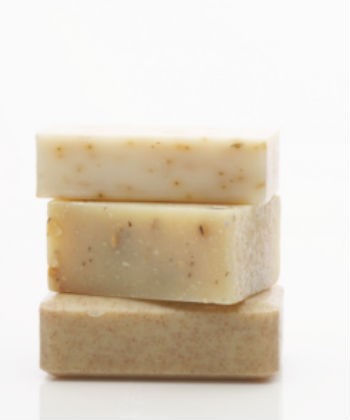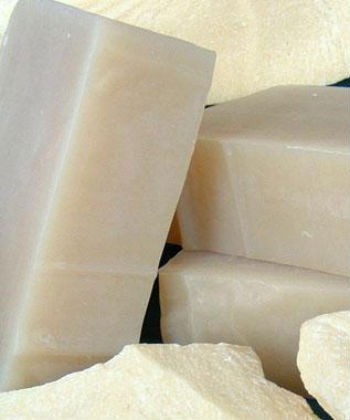Search Results: Sabrina Perkins

Breaking edges is nothing new to curlies. Unfortunately, this is an affliction that many of us have experienced with relaxed hair, excessive straightening, and even with natural hair, so it’s a problem that needs attention. No one wants breakage, and experiencing this along your hairline can be hard to hide and even harder to not be self-conscious about. Many women are self-conscious of the thinning or breaking edges, but instead on fixing the problem they continue with the bad routines to hide them and the problem worsens.
The biggest culprit of breaking edges is our styling routines or hairstyles. It would seem that going natural would have eradicated the issue, but it’s not just relaxers that may be the problem.
Wearing tight styles
This has got to be the biggest contributor to thinning edges. Our hair is versatile and there are tons of styles we like to wear, but unfortunately many of these beautiful styles are created at the mercy to our hair, and especially our edges.
Braid extensions are at the top of the list because they can be too tight. Although they may be ok for the rest of your hair, the hair along the edges is shorter and more fragile than the rest of our hair. Yes, we want the style to last but when we ask for the braider to make them tight, we are doing more harm than saving money.
Micro braids have the potential to cause the most damage, as each braid is tiny and is expected to hold onto a long braid. Even if you somehow manage to keep all of those micro braids in until you remove them, the removal process is traumatizing to the hair and challenging to do without causing any breakage.
Lace front wigs
This is becoming big news especially since Countess, the star of the sitcom The Parkers, publicly shared her disastrous experience of using glue with lace front wigs. She had an allergic reaction to the glue and her hair began falling out at the edges. The attraction to lace front wigs in the illusion of a natural looking hairline that make it appear as though the wig is growing from the scalp.
There is a price for beauty but as more women are finding out, lace front wigs are costing women their edges and their health. Some are becoming allergic to the glue or not allowing ample time in between applications. There is added tension to the hairline to create the illusion and many women have experienced bald or thinning edges as a result.
Leaving chemical treatments on too long
There is a reason products have directions and warning on the labels. They are preventing the consumer heartache and pain but despite the warnings, many women are not taking heed and use products incorrectly with devastating results.
If you want your hair dye to give you a stronger, richer color, then try a bolder color or a higher quality brand instead of leaving the chemicals on longer. We’ve all done it, whether we choose to admit it or not, but keeping a chemical on our tresses longer than the instructed time is not safe even if we don’t see the damaging effects immediately. Since our edges are the most fragile, they are the hairs that most often suffer the consequences of straightening and leaving the color on longer. It’s not worth it.
Satin bonnets
Surprised to see this on the list? Well, I was too until I thought about it and it truly made sense. Some of us are using bonnets with cotton around the edge and the cap can be too tight or rubbing against our hairline. There are satin bonnets with satin edges that are better.
Too much styling product
Yes, back in the day many of us loved slicking down our baby hairs. Oh, I know it ain’t just me! I’ve seen some exaggerated baby hairlines that were the most, but all that gel day in and day out being slapped on your edges is not always healthy. Put down that brush, back away from the slicked down edges, and give your hair a break! The smooth look is not for everyday and your edges need to breathe, so remember you are no longer a baby and neither are your edges.
There are so many ingredients in our food, body, and hair products that we cannot readily comprehend or even pronounce. They sound complicated and seem scientific for day-to-day usage, and some women have chosen to avoid these long scientific words entirely by sticking to natural products and ingredients. That is certainly a viable route, but it is important to be knowledgeable about even these natural ingredients so that you can make informed decisions about what you’re placing on your hair and body.
Take for example, the popular eggs and mayonnaise treatments you have probably heard of, maybe even tried.
The protein in eggs are too large to fit into the hair shaft
According to chemist JC from The Natural Haven, the protein in eggs has amino acids that are too large to fit into the hair shaft and bond properly. Mayonnaise possesses a lot of lubricating oils so if you’ve tried this treatment you’ve probably experienced softer hair, but the benefits of the eggs in mayonnaise are lost on your hair as they too have not been hydrolized. Proteins must by hydrolyzed or broken down so that the amino acids will be small enough to fit and bond to the hair shaft in order to provide the hair with strength as a temporary repair.
Although the word “hydrolysis” may sound complex and unnatural, it is a process that can help prolong the health of your ends and overall health of your hair.
What is Hydrolysis?
Hydrolysis is the decomposition that changes a compound into other smaller compounds by taking up the elements of water. In other words, the compound has undergone a chemical breakdown due to a reaction with water, which is conducted by cosmetic chemist in a lab. By hydrolyzing the protein it becomes small enough to fill into the cracks of your hair’s shaft.
The benefits of hydrolized keratin protein
90% of your hair is keratin protein. The protein we consume aids in creating keratin protein for your skin and hair, and once the hair emerges from its follicle what you consume no longer affects its appearance. Here’s where we see the damage as a result of our manipulation from styling, maintenance, heat usage, sun exposure, weather elements, and dyes. We can temporarily replace that chipped away keratin using hair products containing the smaller, hydrolyzed proteins that absorb into the hair’s cortex and fills in those chipped spaces.
Keratin is the strongest protein found in hair products and it will strengthen all layers of the hair in the cuticle, cortex, and medulla. Hydrolyzed protein is important because it penetrates the hair shaft and reduces the breakage. Due to the moisture binding capabilities of hydrolyzed keratin protein, your hair’s moisture content increases and restores your hair’s body, luster, and manageability.
Common hydrolyzed proteins:
- Hydrolyzed wheat protein (most popular in hair products”>
- Hydrolyzed oat protein
- Hydrolyzed silk protein
- Hydrolyzed soy protein
- Hydrolyzed quinoa
- Hydrolyzed collagen
What hydrolyzed protein will not do
This isn’t the magic ingredient that will eliminate the need for trims. Also, hydrolyzed keratin protein is not a permanent fix for damaged hair or split ends. The protein is merely temporarily attached to the hair, and will eventually rinse away. These products will only decrease the frequency at which you may need a trim, given the damage does not compromise it’s effectiveness.
Do you use protein treatment? Which ones and how often do you use them?
It’s ok to veer off from the pack with a certain brand or ingredient, but know that there are some staple ingredients (and sometimes brands that tend to keep them as top ingredients”> that can make or lack thereof break your hair. It’s time to find out what to look for in the ingredients list of your products when it comes to what you are putting on your hair. Of course, water is essential for most, if not every product in your regimen, but here are some heavy hitters that should follow shortly after.
Cleansers
Botanicals
These are plant or plant derivatives that are full of medicinal or therapeutic properties to aid in cleansing and conditioning your tresses. In shampoos they aren’t as effective. Although they seem appealing in regards to using a natural product, the surfactants in shampoos merely negate the botanicals, and if they rank low on the ingredients list then they are almost completely useless. It’s a little different with cleansing conditioners, as they have extremely gentle surfactants or little to no detergent in them, so there’s no reducing the effectiveness of the botanicals.
Essential oils
Essential oils stand out from carrier oils due to their small molecular sizes. For centuries they have been used to cure illnesses and ailments and are great for sprucing up a shampoo or cleansing conditioner. They are amazing for scalp issues and even aid in cleansing your hair like tea tree oil, peppermint oil, or even eucalyptus oil. They are great for fragrance and are often used in that capacity for products.
Conditioners
Carrier oils
Base oils or vegetable oils are derived from seeds or nuts. They are great for moisturizing and nourishing your strands. The most popular and most favored by naturals tend to be olive oil, coconut oil, jojoba oil, castor oil, and avocado oil. They are great for sealing moisture in your hair. Mixing a few drops with an essential oil will give you double the properties at helping your hair.
Glycerin
Highly concentrated and non-toxic glycerin is a humectant that will help moisturize your hair and mixes well with other water-soluble ingredients. Glycerin pulls moisture from the air to keep your tresses moisturized. Want to get the most out of this ingredient? Deep condition your hair with a plastic cap and hooded dryer or steamer.Protein
Our hair is comprised of 70% keratin protein and stored in our hair’s innermost layer, the medulla. Not all proteins are the same or offer the same benefits, but protein in conditioners are a great way to add strength and structure to your strands, especially in damaged hair. Too much protein isn’t great either, as it can make your hair brittle or even cause breakage so it shouldn’t be used as often as a regular conditioner. Some proteins include hydrolyzed quinoa, hydrolyzed keratin, and hydrolyzed collagen.
Fatty Alcohols
Not all alcohols are bad or cause dryness and breakage. Fatty alcohols like cetearyl alcohol or isocetyl alcohol function as emollients and provide lubricity to your strands.
Stylers
Silicones
Most curlies and naturals have a love/hate relationship with silicones. While they offer a great benefit to your tresses like shine and manageability, they tend to leave a build-up that’s unpleasing to work with when it comes to wash day. Just like alcohol, the curly must determine if she wants them in her styling product. A popular water soluble silicone to look for is PEG-8 dimethicone.
Conditioning Agents
These are great for combating stickiness, dry flaking, and making the hold feel better. When it comes to styling aids, less is more and most curlies want hold but not at the price of weighing down their curls or with the result of flakes. Adding an oil to the palm of your hands with your styling product will help make it smoother and combat dryness and flakes, so always remember you can spruce up any product to give you better results. Some conditioning agents include propylene glycol, cetrimonium chloride, and stearamidopropyl dimethylamine.
As if we truly need another division, there is the nagging realization that some naturals are holding up their noses to other naturals. There appears to be an air of snootiness that is unbecoming, downright ugly, and when you think about it, it’s pretty petty. Who is more natural? The natural who just stopped using relaxers a year ago, two years ago, or ten years ago? Wait, what about the naturals who have been natural all of their lives or have been natural for over twenty years? Honestly speaking…who cares?
Actually, quite a few veteran naturals (naturals who have been natural prior to this growing wave of acceptance”> care and as we see a rise in the natural hair movement, they are getting louder in their disdain for all the newcomers. Is this normal? Do veteran naturals need to voice their greatness at doing this before it was “trendy?” I’ve seen tees, memes, and rants on social media announcing they were natural before it became “trendy.” I don’t get it and here’s why:
I was natural before this new wave of acceptance. I’ve been natural for almost ten years and the journey was super rocky in the beginning. I had no clue what I was doing and finding information on natural hair care was nearly impossible. Not many blogs, vlogs, or magazines were explaining what to do and let’s not even get into the lack of products to help my tresses. I was pretty much on my own until I found Miss Jessie’s in 2008 and a few online sites like Curly Nikki the following year. This newfound support was necessary and nurturing. I began seeing my hair as less of a hindrance and more of a unique beauty that has been misunderstood and neglected. I was excited and gobbled up the knowledge because there wasn’t much at the time.
Springboard to today and you can’t go anywhere without seeing a natural walking down the street. You can’t jump on social media without hearing about a natural hair event or a new book coming out, and we actually have natural hair superstars that are as revered as experts in the field. It’s overwhelming sometimes but a blessing nonetheless, and it makes sense as more women are big chopping and transitioning everyday. My confusion stems from the bitterness some veteran naturals feel toward the newer ones. Why are they mad? Why do they need to announce they were here first? Believe me, there is no prize for going natural before it was “trendy” and most of us have the battle scars from the lack of information, products, and support. Maybe that’s that the point. We did it when it was hard, unpopular, and risky.
I truly don’t understand the need for the anger or even acknowledgement.
Yes, I’m proud of going natural so long ago, but if it wasn’t for the popularity of going natural, there wouldn’t be an abundance of information, products, and support that we have now.All these newly naturals are bringing great things to the movement and solidifying our hold in fashion, style, and culture. We can be seen everywhere, and despite the negativity some receive from family members and co-workers, the mood is positive and welcoming.
This division is neither needed or appreciated and it’s certainly not productive to the movement. So you were natural before it was “trendy”…so what? Does it change the love so many women are getting for embracing their natural texture? Your push to nurture your natural tresses made it easier for others to do it, and as the pioneers of the movement, please understand that newly naturals appreciate your hard work, determination, and drive. You trail blazed the love for our natural hair, and as newly naturals approach you to compliment your beautiful hair, just smile and say thank you. To broadcast you were natural before it was “trendy” is hurtful and unnecessary because the power of the movement stems from a unified acceptance of others and ourselves. It takes all of us to keep it going.
Be proud of being first, just don’t throw it in someone else’s face. Natural hair is beautiful and it’s ok that it took some of us more time to make that connection.
If conditioner is king to curly hair, then gel has got to be the queen. A good gel can make all the difference in your hair’s mood and look for the day. Gel takes on a whole new meaning when you are discussing curly and coily hair in comparison to relaxed hair. Gels were used when relaxed women wanted to slick down edges or to put their hair in a ponytail. For curly or natural hair it has a far less dramatic usage (well, not using gel on a rainy day will get pretty dramatic, trust me!”>, because gel on curly hair is for fighting frizz and flyaways and enhancing your curl definition.
Curlies are always looking for moisture in hair products and any ingredients that will have drying effects to your tresses are products most of us tend to steer clear of. Alcohols, all types really, are considered bad for having drying properties, but not all alcohols are the same. There are good and bad alcohols and curlies just need to be aware of the differences.
Top 20 Curl Friendly Gels
Because highly porous hair can also lose moisture easily, it’s important to use leave-in conditioners, moisturizers, and sealers. Layering these products will help your hair hold on to the moisture you’re giving it. You can even follow up with a heavy hair butter to help fill the gaps in your damaged cuticles and further protect your hair from losing too much moisture.
Some curlies who use chemicals (color, texturizers”> can attest that your hair can take a beating from it. It’s time to get our hair back in shape and smooth out the rough edges so we can get back to gorgeous tresses. Don’t get all tangled up in worry on what to do because there are several products and DIY remedies to keep that cuticle down and help those damaged strands.
MORE: Take a Porosity TestTop 14 Products for High Porosity Hair
Because highly porous hair can also lose moisture easily, it’s important to use leave-in conditioners, moisturizers, and sealers. Layering these products will help your hair hold on to the moisture you’re giving it. You can even follow up with a heavy hair butter to help fill the gaps in your damaged cuticles and further protect your hair from losing too much moisture.
Some curlies who use chemicals (color, texturizers”> can attest that your hair can take a beating from it. It’s time to get our hair back in shape and smooth out the rough edges so we can get back to gorgeous tresses. Don’t get all tangled up in worry on what to do because there are several products and DIY remedies to keep that cuticle down and help those damaged strands.
MORE: Take a Porosity TestTop 15 Products for Low Porosity Hair
“Keep Calm, I’m Natural”, “Big Hair Don’t Care”, “Curly Girl”…all of these phrases have been heard by most naturals on more than one occasion and can be seen everywhere on the web, but the biggest place to find these phrases is on apparel. Creating natural hair shirts is a booming business and as more women embrace their natural tresses, the desire to share the love has been creeping into our fashion.
It’s fashionable to be natural, but it’s even more fashionable to wear natural hair tees, earrings, and totes. Everyone is getting into the game and many vloggers and bloggers (namely myself”> are jumping on the bandwagon.
Top 10 Natural Hair Apparel Brands
These are the worst! It’s one thing to feel your hairstyle is stale, but it’s a whole other issue if your go-to hairstyle is also damaging your tresses. This often happens to some naturals wearing wigs, weaves, or braids for long periods of time. It seems like it’s protecting your hair, but you may be sacrificing your edges or length with tight extensions or not allowing your hair and scalp to breathe in between installations. Sometimes you can have too much of a good thing.
The main reason many naturals find themselves stuck in hair damaging ruts is due to lack of knowledge. Some styles just aren’t made for every hair texture and sometimes the problem lies in the overuse of a product or style that causes the greatest damage. It doesn’t matter how you ended up on damage hair road, but how you plan to diverge to healthier routes that is important.
Yield to signs
Your hair will tell on itself and you. If it continues to stay dry, brittle, or breaking, then there is a problem and something needs to change. It could be the products you are using or even just the styles that you are picking that do not agree with your hair. If you keep getting fairy knots (single strand knots”> that are hindering you from length retention then you need to cut back or eliminate the wash and go (I am saying this to myself as I type”>. If you wear box braids but each instillation leaves you with thinner edges, then you may need to leave the braids alone. Pay attention and don’t think the problem will miraculously go away. It never does.
Browse YouTube
Some naturals have limited knowledge on styling options, but almost any style ever created will have a tutorial on YouTube. You may need to start following some awesome, well-known YouTubers like Naptural85, Mahogany Curls, and My Natural Sistas. All of these women are known for their creative styling abilities and knowledge.
Add protein
Adding protein treatments may be all your hair needs if it’s been lacking in your hair regimen. I notice that doing a monthly protein treatment is sufficient, because too much protein can make the hair brittle. Weekly treatments are too often and unnecessary. Some naturals feel they are protein sensitive, but they may just be sensitive to a particular protein.
Stop bad habits
You may know that using a particular product causes havoc on your hair, but you are addicted to the way it makes your hair feel. Stop the madness! It’s time to let it go, try a new style, or look for a new product. Although the damage may not be apparent, it will transpire overtime. I always have a delayed reaction to a bad hair habit because I won’t see the bad effects for weeks. If you know you are using heat too often or at high temperatures, don’t think that because it hasn’t broken off yet that the damage hasn’t occurred. Step away from the bad habits and products. That may be all you need to see a major difference in your hair’s health.
Consult a professional
This does not get mentioned as often as it should, but finding the right professional for your problem is necessary. If you have scalp issues, you may need to visit a dermatologist. If you are suffering from massive hair loss, it may be your medications, hormones, or stress so you may need to schedule an appointment with your primary care physician. If you cannot manage to moisturize your dry, brittle hair, you may need to see a curly or natural hairstylist.
You also may need to eat better, exercise, and drink plenty of water to combat many of these issues. Taking the best care of your body from the inside is always a good idea. Getting adequate sleep and consuming vitamins may stop even more issues you are having with your hair! I’m not saying any of these things will eliminate real ailments and medical problems. These suggestions can only help, so remember that your hair is affected by what you put on it and into your body.
Some just want convenience of popping a vitamin to gain longer tresses quicker.
Yes, most of us remember taking those disgusting liquid vitamins growing up, but liquid vitamins are making way with adults and that also means naturals. So the debate begins on which is better…liquid or pills?
We have to ingest the vitamins in order for them to get into our system, and although many feel food intake is the best way to get vitamins, there is proof that many of the nutrients that we need are lacking in our foods. Unfortunately, most foods are highly processed and even fresh fruits and vegetables may not be enough, especially if you aren’t eating an adequate amount. Despite what many say, most doctors see nothing wrong with some supplements and even the American Heart Association suggest that all should gain vitamins and minerals through food first, but supplements can help especially if you are not eating as well as you should.
At first glance it would seem that liquid vitamins are better since they are easier to take and they are believed to have as high as 98% absorption rate. Liquid vitamins are deemed more effective because they can be integrated into the blood stream immediately and can be three to five times more concentrated than traditional vitamin pills, but absorbing into the bloodstream is not as easy as many liquid vitamin manufacturers would have you believe.
There are some nutrients that will enter the bloodstream through the mouth when you drink it, but many have large molecules that cannot pass the membranes of the mouth and end up in the stomach and are destroyed by the stomach acids and excreted.
Vitamin pills have to be digested completely before they can be used and benefited by the body. There is a misconception that about 90% of a tablet vitamin is excreted or wasted. That’s actually misleading for the number one reason that not all vitamins are created equal. Cheaper vitamins are mass-produced and have the cheapest ingredients, including the excipients that bind the ingredients together. Because of this, most of the nutrients are released in the stomach and destroyed by our stomach acids and end up in the toilet.
On the other end of the tablet vitamins spectrum are the ones that are created using high quality ingredients that are natural, potent, and are mostly absorbed in the lining of the walls of the upper intestine where they are entered into the bloodstream. So despite liquid vitamins being easily absorbed, the higher quality tablet vitamins can as well.
Nzuri Elixir Liquid Hair Vitamins Plus Growth tout a ¾ of an inch to 1 inch of growth per month, which is double the high end of hair growth per month for some. They also claim the hair tonic “supplies the body with the proper vitamins, amino acids, and minerals that you may not be receiving in your diet to help create beautiful, healthy hair.” Are these claims true? According to the thousands of women using it, they feel it does but it could just be the doing about the same as many hair vitamins that women are taking and not really having an advantage over the tablets.
It seems to be a matter of preference, and if you hate or have a problem with pills, then the liquid is another option. It seems that higher quality ingredients is the real determining factor on which a brand or type of vitamin to take, but remember that eating right is always essential for healthier hair.
Silicones are common synthetic ingredients that give your hair that silky feeling. They can provide great slip for detangling and combat frizz, but they have the tendency to build up on our hair which would then require clarifying products to remove it. There are types of silicones that are not water soluble and can be found in many hair shampoos, conditioners, and gels. One of the best means of removing silicones is using a sulfate shampoo, which tends to be harsh to our curls and can strip the hair of the natural oils it needs. Silicones can also weigh down your curls. The ingredients are usually words that end in ‘cone, ‘col, or ‘xane like:
- dimethicone, amodimethocone, cyclomethicone, cyclopentasiloxane, trimethicone, dimethiconol
If your hair is feeling dry and out of shape, it might be time to do a silicone detox and cut cones out of your life. Try this out for one month and see how your hair reacts to your new regimen. We’ve rounded up a list of silicone-free products that will still give your tresses all the slip, shine, and nourishment you want while you detox.
Silicone Free products
Have no fear, a natural expert is here! Ok, not really but I do know a few tricks to lower your manipulation in each step of your regimen. Even the wash and go girlies (Hey boo, that’s me too!”> can find a few ways to knock out some steps in our daily routines. We all have our own unique curls, coils, and waves, but most of us share similar routines for basic upkeep.
Cleansing
Cleansing is a big deal in hair care, as dirty hair is not healthy hair and no matter what you do, you have to manipulate your strands. Here’s a secret…in order to loosen the dirt, product, and tangles, allow the water run on your hair for about 2-3 minutes. You can even gently massage your scalp to help! It really works. Now, what I’m not saying is that the dirt and tangles will miraculously dissolve, but you will be allowing your hair to become fully saturated and more manageable.
Wash your hair in sections. I cannot say this enough! Sectioning your hair in at least four sections will give you less hair to work with for tangles and that means less manipulation. Some things cannot be eliminated so working in sections will allow you to concentrate your efforts and save much heartache and hairs!
Try pre-pooing if your detangling sessions on washdays are nerve-racking. It may seem like pre-pooing is increasing manipulation, but in all actuality you are allowing your hair to maintain the oils it needs even after it’s been cleansed, and that is much easier to comb through than a dry tangled mess.
Conditioning
Most curlies use generous amounts of conditioner, as it helps with hydrating your curls and can make detangling easier, but if you want to decrease manipulation then try putting down the wide tooth comb. Gasp, yes, I said it! Use your fingers and actually feel your hair as your detangle and shingle conditioner through it. This is more about being gentler to your hair than less manipulation, but the end result is the same.
Sectioning your hair during the conditioning process works the same way as in the cleansing process with the same amazing results. Less tension on less hair yields big benefits in the hair saving category.
Splurge on the deep conditioner. I’m not saying buy the most expensive, but buy the one that works the best and many times it’s the more expensive one. It’s so worth it as a great deep conditioner can shape how your hair will act during the week or until you wash again. Your best deep conditioner will fortify your strands with moisture and gives your hair life. As it infuses your hair strands with nutrients, it temporarily repairs your hair and makes it shiny. All of these reasons will lead to less manipulation because your hair will be in better shape and need less work from you.
Styling
Protective styling is top of the list on ways to lower your manipulation during the styling phase. Such styles like braids, weaves, twists, and buns all fall under protective styles. If it’s protected, it’s not being manipulated and many protective styles can be created to last days and even weeks. Now, don’t think by solely protective styling you are safe. You will still have to cleanse and deep condition your tresses, so never neglect your hair whether under a wig, in a sew-in, or any other protective style.
Don’t fret my wash and go curlies! We can have less manipulation as well. You can yield second or third day hair by putting your hair in a pineapple at night.
Know your hair! If you know waiting two weeks until washday is going to give you a detangling session from hell, then don’t wait two weeks! Avoiding your hair duties will create more manipulation, aggravation, and yanked out hairs on the floor. Stay ahead of your hair routine game, because when you start slipping is when you start losing hairs, and no one wants that to happen!
It’s a new world for naturals and our confidence and versatility make it difficult to ignore. Our hair is stylish, so it makes perfect sense that we are trickling into the fashion world! We are gracing magazines, commercials, print ads, and runways. It only stands to reason that this trend spills over into all forms of fashion, including kids modeling. Kids have always modeled, but with the rise in diversity among adult models it has trickled down to the kid models as well.
Just like adults, modeling for kids is fiercely competitive, but just being cute isn’t going to cut it anymore. It’s an art form… a craft that take more than a pretty face and a cultivated walk. It takes the latest look that mesmerizes the consumer and makes them feel they need whatever you are selling. Yea, it’s that real, but we’re not here to discuss the ugly side of modeling, as every industry has its bad side, but rather we are here to celebrate ten amazing kids who remind us how talented and beautiful our children really are.
Natural hair to many is a gorgeous accessory and as we continue to grow in numbers, the kid modeling world is embracing and showcasing our hair on our children and we are loving it!
Shrinkage is one of the top five most infuriating natural hair problems for most naturals. Everyone is trying to fight it or stop it before it even begins. It’s the devil to some while others just feel it’s something one must “deal” with. Some curls have minimal shrinkage while others contract to 50% or more of their true length. As we stretch our coils to show the world we actually have long hair, I’m wondering if we are all missing the point.
Although everyone’s reasons for returning natural are different, the point of being natural is accepting and nurturing the hair that is naturally growing out of your head. It’s that simple. The problem with that thought is we do not live in a society where all women are considered beautiful in their natural state whether we are discussing body image, age, skin tone, or hair texture. We are in a highly superficial society where looks are everything and most women and girls are pressured to feel they must abide by what the masses view as acceptable and aesthetically pleasing to the eye.
I’m not digging too deep, I promise you. Loving oneself is all about acceptance and feeling lovely from within. That means loving your skin, face, eyes, lips, and whole body, which includes your hair. Once you embrace your hair’s personality, it calls to reason you would accept its natural tendency to coil within itself tighter and reaching closer to you. Ok, too deep? Maybe…but loving what our hair does without texture-altering hair tools, techniques, and tortures is what makes our hair journey a positive and productive pilgrimage.
We are constantly told to listen to our hair, but as we watch it shrink right before our eyes we are forever pulling it back, yanking on it with thread, heat, and styling tools. Are we listening or are we turning our backs and doing what we feel is more of an acceptable appearance for our tresses? Are we succumbing to the gnawing apprehension to show off our length? These are challenging means to feel or prove we measure up.
When our hair comes into contact with our clothing, the elements, and pollutants (which can all cause damage”> we hate the very nature of our hair’s ability to protect itself by drawing up and away from them. Embracing shrinkage is not just healthy for our psyche but it’s healthy for our hair. By allowing our hair to stay in its shrunken state we are being true to its design and its purpose. Excessive straightening can be damaging yet we do it day in and day out and at many times at the expense of our hair’s health. As we stare at your split ends, broken edges, or heat damaged hair, think about why you are doing all this damage to your hair? Who is it for?
Your hair journey is a personal one, but for it to be positive means doing what is necessary to keep your tresses healthy. That also means to decide if your shrinkage is the real problem with your hair or if it’s your perception of what is acceptable or beautiful. No one says you have to wear your hair in its shrunken state 24/7 but make sure you are not wearing it straight 24/7 because you cannot accept your hair’s texture. Who you are and what your hair does naturally is more beautiful than any false notion of fabricated perfection. Embrace your true natural self in all forms and watch your spirit, mind, and hair grow immeasurably.
There are tons of YouTube videos and blog posts on trimming your own hair but honestly, it’s not for everybody. There are times when seeking out a professional may be the way to go and with the natural hair movement being as strong as it is, there are more curly hairstylists who can actually cut our hair! You can find your nearest curly friendly salon at Curl Salons.
Reasons You Need a Professional Trim
The natural hair movement has been going strong, and with little to no lagging in 2014. With relaxer sales decreasing (as a direct result”>, it’s easy to see the major influence that natural hair is having on black women around the world. Despite this phenomenon, one area of hair care that is not losing consumer interest is the hair extensions and wigs market.
Black women are major consumers of extensions and wigs, regardless of the insurmountable flack they receive. One reason women like extensions is the versatility and extreme low maintenance. Another reason is because several companies are offering textured hair for those who want more length and less maintenance with the same or similar aesthetic as theirs. This was pretty much unheard of a few years ago as most weaves and wigs were catered to the relaxed hair look and most curly wigs resembled a mini, spiral rod sets. Back then you might see some 3B’s or a few 3C’s but the 4’s were either poor quality, lacked variety, or were not easily accessible.
Manufacturers go where the consumers are, so as natural hair becomes big business, it only makes sense that we see more wigs, weaves, and extensions with natural hair textures being offered on familiar wig sites. The real news about this surge in natural hair extensions and wigs is that there are new extensions on the block! Naturals are creating wigs and weaves for other naturals. I love it! Here are a few companies that have really put in the extra work to make some fab natural hair wigs and extensions.
Shampoo bars are making waves in the natural hair world as many naturals are finding them as wonderful alternatives to traditional shampoos. Many liquid shampoos are full of synthetic ingredients that create lather. Shampoo bars are created specifically for textured hair and their suds tend to be luxurious and creamy. One of their biggest advantages is their all-natural or almost all-natural ingredients like oils, butters, and herbs.
Many don’t require preservatives so they do not keep well for a prolong period of time. Their small sizes make them perfect for traveling. There is no worry about leaking and they tend to be much less pricey than their liquid counterparts. Basically, they are truly worth a try and we’ve got 15 for you to check out.
AfroVeda Carrot Seed Clarifying Shampoo
We all know carrots are amazing for your eyes and apparently they do wonders for your tresses too! With herbs and essential oils, carrot seed oil is known for growing and strengthening your hair. The beta carotene in this shampoo bar will hydrate your strands, and with all the goodies packed into this shampoo bar it’s no wonder it was voted “The Best Hair Care Products (cleanser”> for Black Women With Natural Hair” by the readers at Livestrong.com





